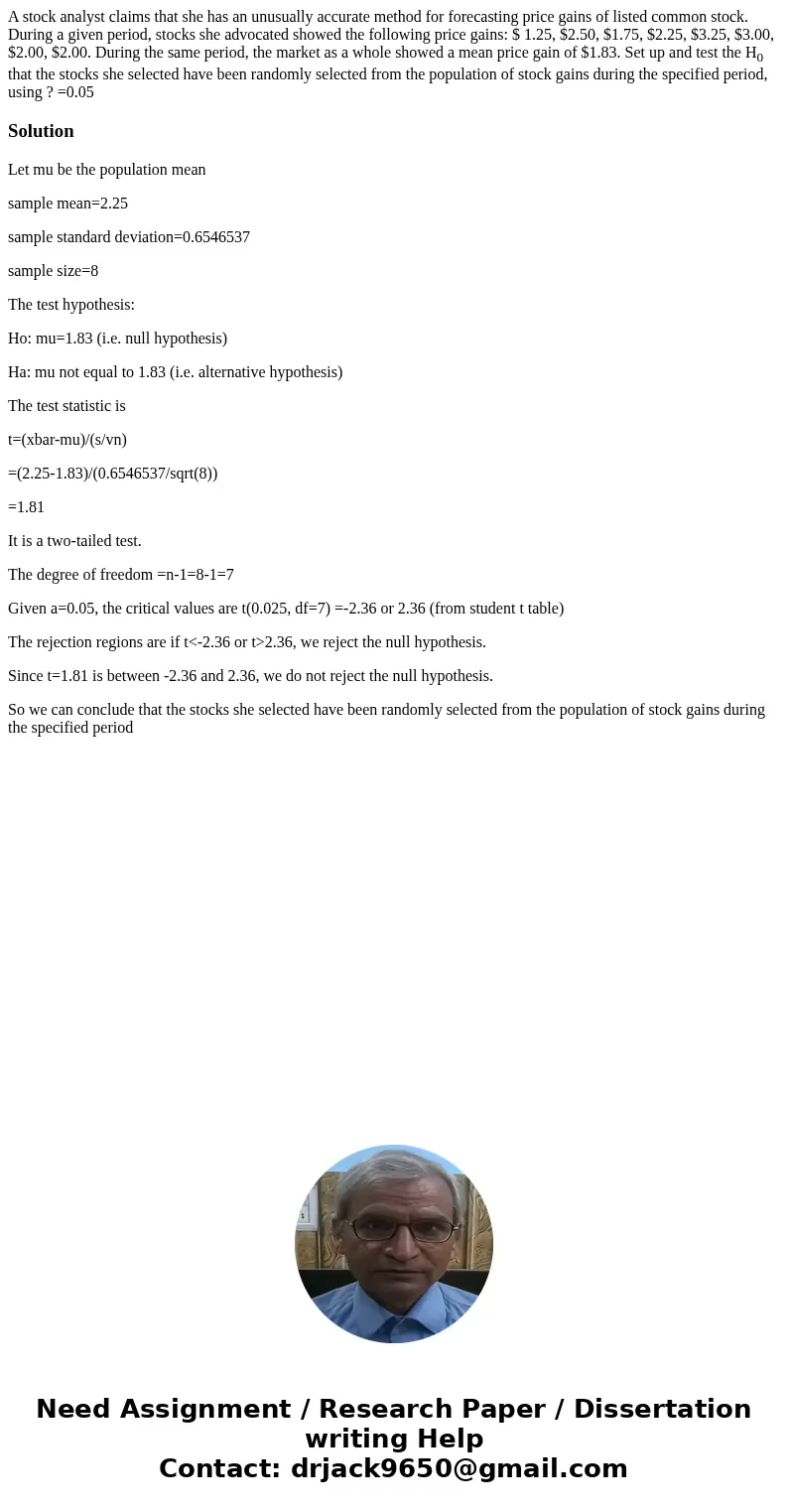A stock analyst claims that she has an unusually accurate me
A stock analyst claims that she has an unusually accurate method for forecasting price gains of listed common stock. During a given period, stocks she advocated showed the following price gains: $ 1.25, $2.50, $1.75, $2.25, $3.25, $3.00, $2.00, $2.00. During the same period, the market as a whole showed a mean price gain of $1.83. Set up and test the H0 that the stocks she selected have been randomly selected from the population of stock gains during the specified period, using ? =0.05
Solution
Let mu be the population mean
sample mean=2.25
sample standard deviation=0.6546537
sample size=8
The test hypothesis:
Ho: mu=1.83 (i.e. null hypothesis)
Ha: mu not equal to 1.83 (i.e. alternative hypothesis)
The test statistic is
t=(xbar-mu)/(s/vn)
=(2.25-1.83)/(0.6546537/sqrt(8))
=1.81
It is a two-tailed test.
The degree of freedom =n-1=8-1=7
Given a=0.05, the critical values are t(0.025, df=7) =-2.36 or 2.36 (from student t table)
The rejection regions are if t<-2.36 or t>2.36, we reject the null hypothesis.
Since t=1.81 is between -2.36 and 2.36, we do not reject the null hypothesis.
So we can conclude that the stocks she selected have been randomly selected from the population of stock gains during the specified period

 Homework Sourse
Homework Sourse